The United States Navy is one of the reasons the United States is a formidable force like the world knows it to be. The country has a vast military with strongholds around the world and many powerful allies. The United States Navy also happens to have some of the most incredible ships in its command, with some being secretive in nature so as to make sure that the rest of the world remains the wiser.
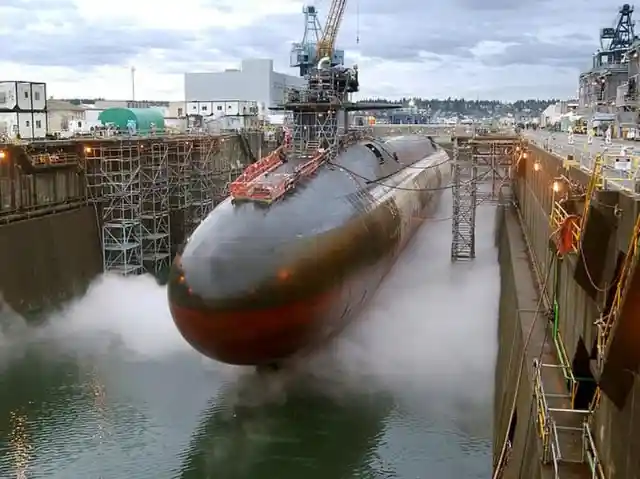
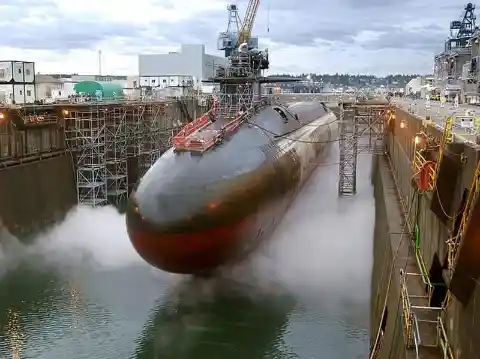
The technology behind some of these ships seems alien and futuristic, but it is all here and all ready to go should the United States ever need to use it. We collected 30 of the most impressive United States Navy warships that they have in their grasp, with inside information from Navy SEALS and their compatriots providing an explanation as to how everything works and why they needed to even have such technology on these ships.
The very location of many of these ships is kept under wraps for security purposes but that did not stop the world from searching (and finding) some of them so we could all quench our thirst to know who and what helps the Navy be the powerhouse that it is. These ships are not only incredible in size, their power and weaponry are enough to create quite a bit of damage. While we hope never to need the power, we are sure happy to have it on our side.
High-speed littoral combat ship (USS Independence LCS-2)
This ship is not at all about speed but it is indeed all about weight and size. This ship weighs in at a whopping 3,104 metric tons when it is full. While the ship is indeed large it can move when it decides to. The maximum speed that the USS Independence can travel is 44 knots and has managed to prove its worth in the Rim of the Pacific Exercise.
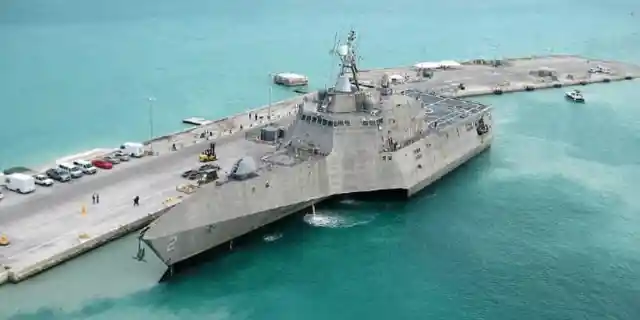
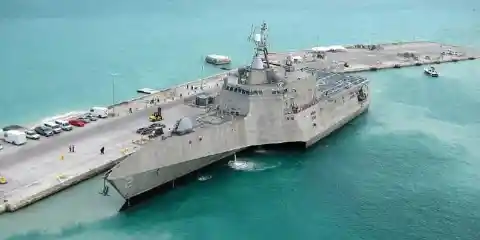
While being built, this ship saw quite a few roadblocks, including a leak in the gas turbine, and, due to faulty electric insulation, corrosion. She calls San Diego home and holds AGM-114 Hellfire missiles.
One of the biggest U.S. Supercarriers (USS Gerald R. Ford CVN-78): Part 1
This has recently become the largest warship after the USS Enterprise was retired after over 50 years of service. This giant ship was constructed by Northrop Grumman, as it floats at over 100,000 tons. The Chief of the Naval Operations, Admiral Jonathan Greenert, called the ship a “technological marvel.
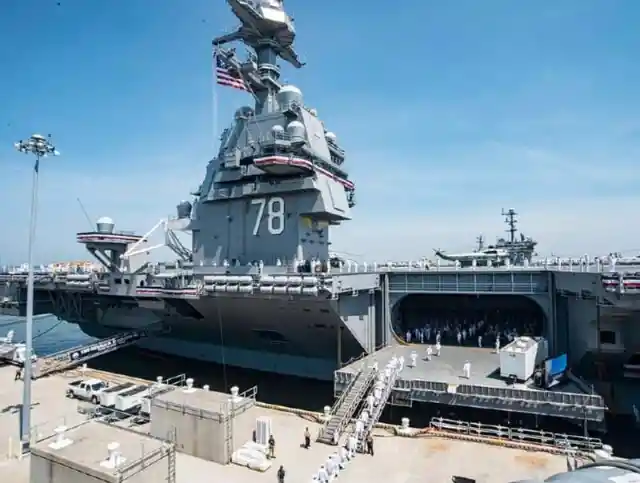
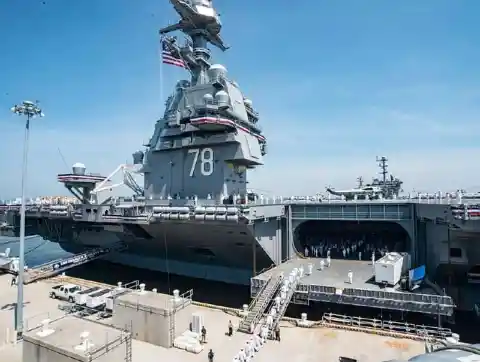
She will carry unmanned aircraft, joint strike fighters, and she will deploy lasers.” The ship was initially launched in 2013, but was commissioned in 2017. The ship is expected to deploy in 2022 when it gets a technology and software upgrade. It is said that the upgrade is going to save $4 billion in operation costs.
The lead submarine tender (USS Emory S. Land AS-39)
The purpose of this massive ship is to provide services and supplies to the submarines that are a part of the United States Navy. As soon as a repair request comes in for a submarine, the vessel will go to it and with it bring the necessary parts and provide the shop on board for the repair - that is how large it is.
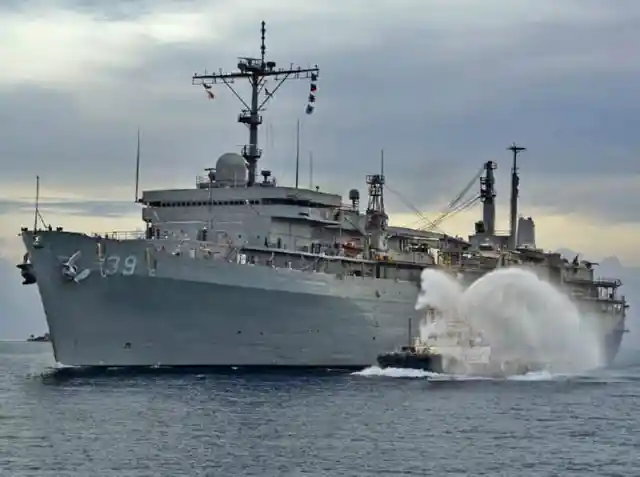
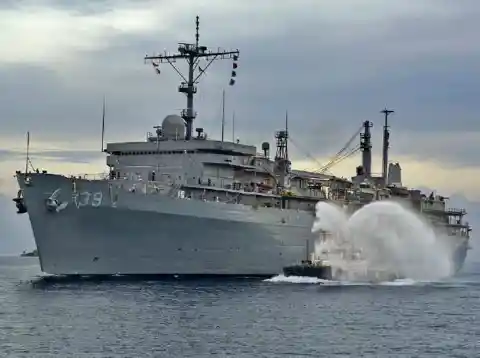
In addition, the ship provides dental, and medical care for the men at sea, as well as their mail. This ship was first launched in 1977 and holds port all around the world so there is no one place it calls home.
USS Gerald R. Ford (CVN-78) Part 2
This warship is as expensive as it is huge. The cost to build this massive warship stands at $13.027 billion, making it the most expensive ship to be built in history. The reason for the expense has also to do with the fact that the ship was designed with an Electromagnetic Aircraft Launch System that effectively replaces the catapult system that has been used for the last 70 years.
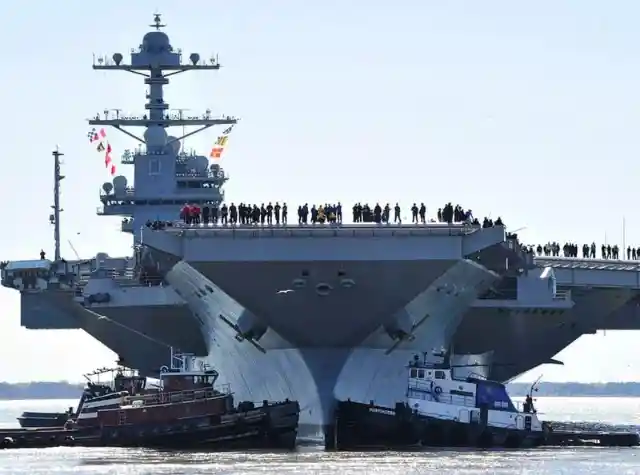
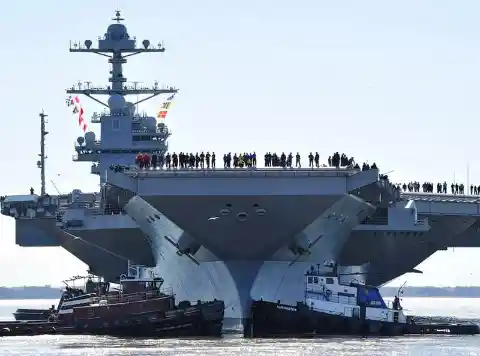
This beauty also received two RIM-163 Evolved SeaSparrow Missile launchers to make sure no one messes with it from the skies above. The ship also happens to be powered by not one but two A1B nuclear reactors.
Destroyer ship (USS Kidd DDG-100)
This destroyer may seem familiar to you and that is because it was used in the film Transformers: Revenge of the Fallen back in 2009. The ship has Tomahawk missiles on it, as well as DDG-100 submarine weapons so that they are covered from all angles. The massive vessel, despite being as big as it is, actually got damaged due to Hurricane Katrina, forcing it to be non-active until 2007.
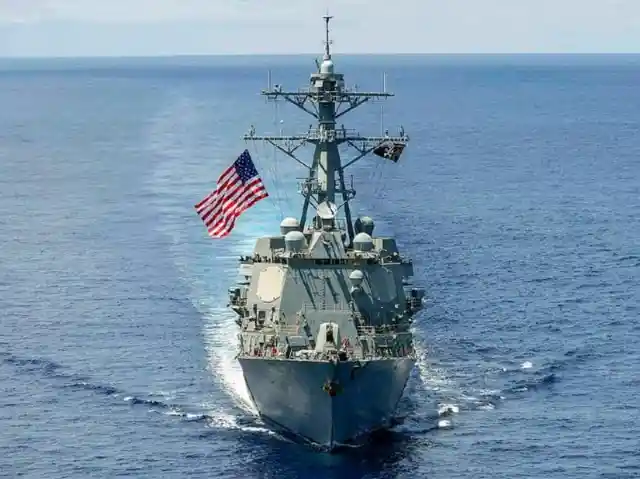
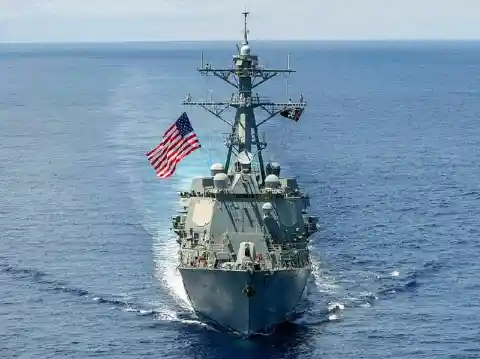
Since then, however, this ship has been a proud member of several operations, including the search for the downed Malaysian flight and the case of the Iranian fishing boat that was taken over by pirates.
USS Ohio (SSGN-726)
The United States Navy holds 18 of these submarines as part of its ranks. No less than 14 of these submarines are equipped with ballistic missiles, and the other four with launch-guided missiles. This baby was set to be retired back in 2002 when three of its other similar ships were wholly shifted into launch guided missiles. Each of the ships holds 22 torpedo tubes and have seven Tomahawk missiles.
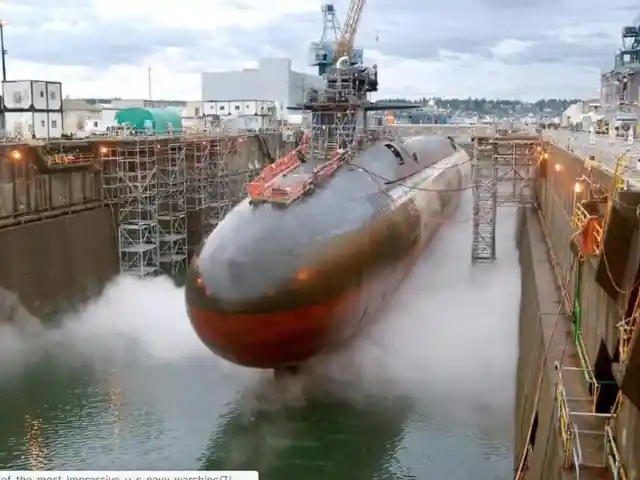
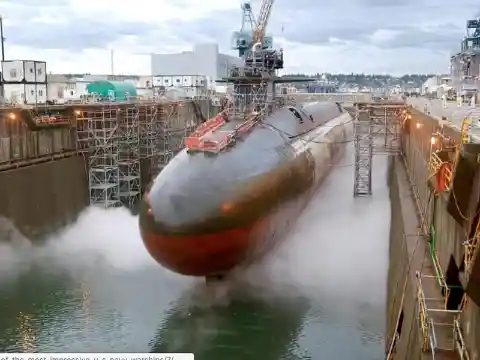
A proud moment - this submarine was the first to have a woman Navy Officer to qualify for service aboard its ranks back in 2011. This mammoth of a ship can last 60 days without needing to resupply.
Nuclear attack submarine (Seawolf-class Attack Submarine SSN)
This submarine is the most expensive attack submarine to date as the cost to build just one is $3 billion. There are only three of these subs in the water today, despite there being a plan for 29 of them - just too expensive! These subs can last in the water indefinitely, with the only limit being supplies and food considering there are men piloting it.
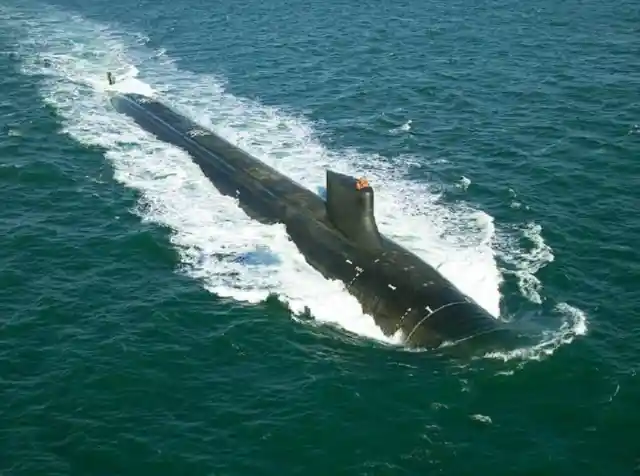
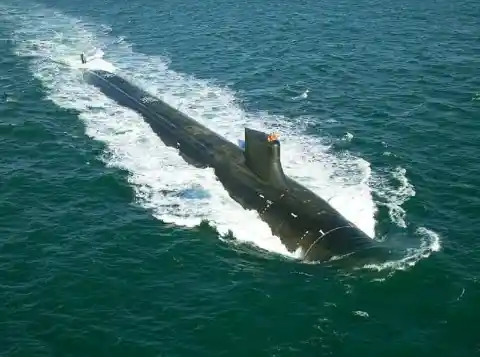
These subs hold eight torpedo tubes, MK48 guided torpedoes, and each has the capacity to launch Tomahawk land attack missiles without issue. She can also travel at 20 knots, in super stealth mode so now one knows she is there or coming.
USS America (LHA-6)
This is the first America class warship of its kind. It replaced the USS Peleliu which was a part of the Tarawa class of ships. This ship works as the main hub of an amphibious ready group, helping bring small task forces with the help of their helicopter gunships.
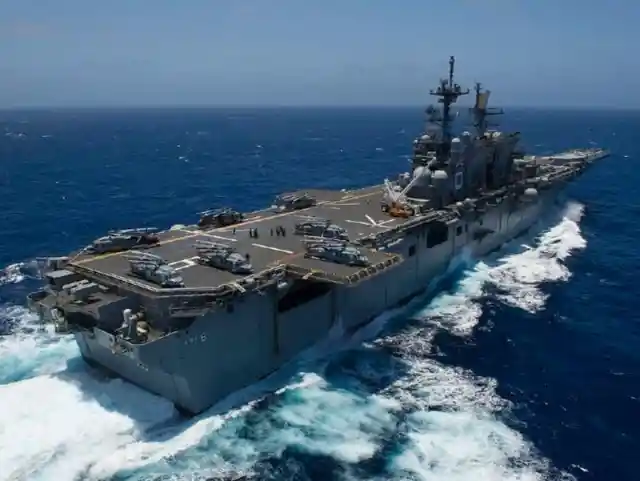
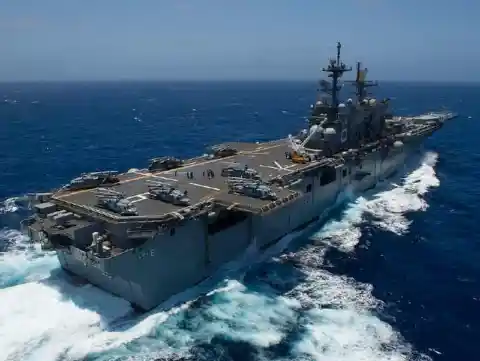
Much like other ships here, she also ports in San Diego where the Navy calls its home base. The ship was initially launched in 2012 and commissioned in 2014. There are those who do not like the design of the ship as they think that the design could hurt the speed of the ship.
Transport dock ship (USS Somerset LPD-25)
This giant warship was launched in 2012 and was named after the location of Flight 93 went down on September 11, 2001 - Somerset County, Pennsylvania. The Somerset weighs in at 25,000 tons and holds on its structure two 30 millimeter Bushmaster II cannons, as well as two Rolling Airframe Missile launchers.
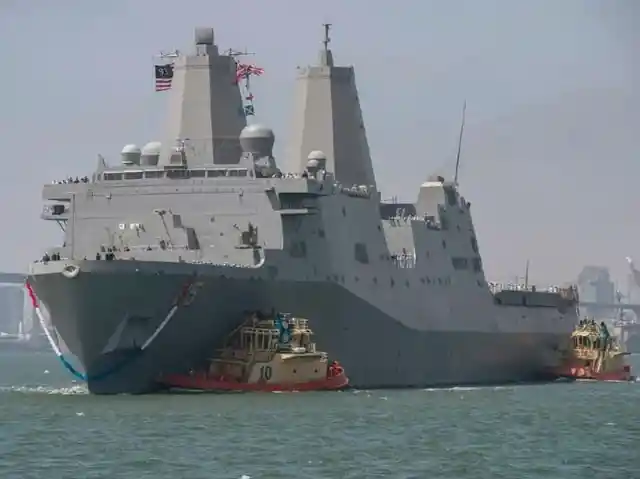
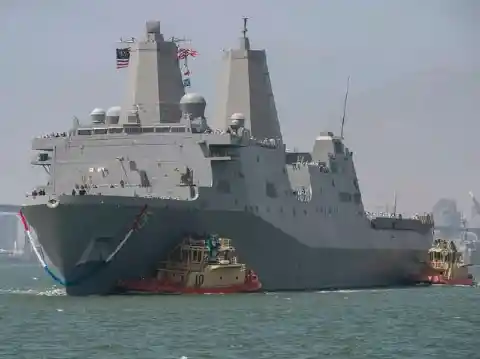
There is a crew of 800 individuals on board and this ship, too, calls San Diego home. This ship was the last one to be constructed at the Avondale Shipyard that had been used for the Navy since 1938 and has now been retired and relocated.
Ghost Boat
This is the smallest one we have spoken of so far but it is by no means weak. This stealth ship can carry a large number of weapons and is as quiet as can be, hence its name, Ghost. The ship was designed to practically glide over the water and be as silent as possible so as to go undetected.
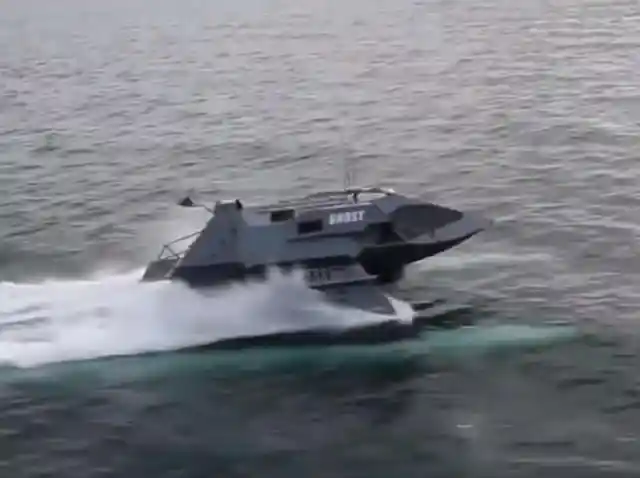
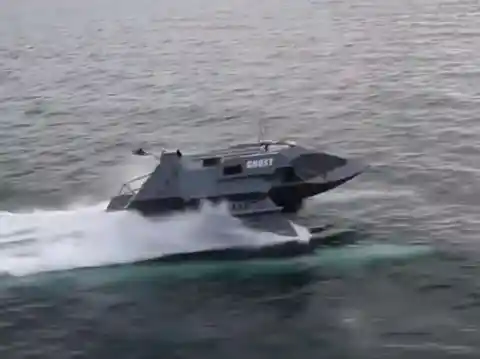
The Navy wanted to buy the technology that silences the ship but when the CEO refused, they went around and put an order of secrecy on the company so as to prevent other countries from getting the information for themselves.
Aircraft carrier (USS Enterprise CVN-65)
This aircraft carrier, now decommissioned, has been through a lot in its time. This warship was commissioned in 1961 and sent out only a couple of months later as part of the Cuban missile crisis. The role this ship had was to form a blockade so that the Soviet army supplies could not get to Cuba.
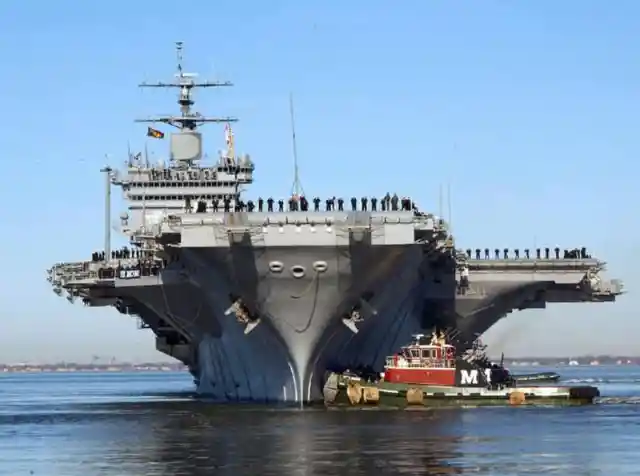
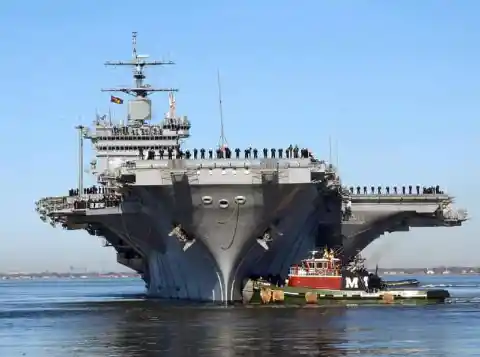
In 1969, an MK-32 Zuni exploded inside of the ship accidentally as well. The Enterprise has also been in Korean and Vietnam war operations, as well as aided in the attacks on Al Qaeda and Taliban forces during Operation Iraqi Freedom. This piece of history was decommissioned in 2017.
Multipurpose amphibious ship (USS Wasp LHD-1)
Ah, the Wasp class ship. This vessel was designed to carry military vehicles of all kinds for amphibious air-ground attacks. These are thought to be the most complex military tactic due to the heavy amount of strategy and coordination that it takes to pull it off.
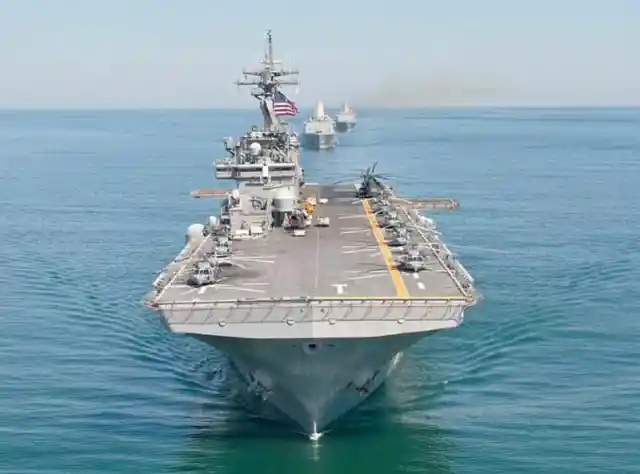
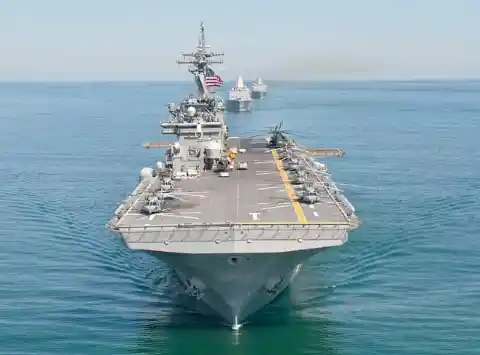
This warship is equipped with all of the best modern weapon technology around - RIM-116 Rolling Airframe Missile launchers, RIM-7 Sea Sparrow Missile launchers, chain guns, and a Phalanx close-in weapon system. The ship is also ready to take care of 600 wounded men should there be the need for it. She was commissioned in 1989 and is on the open ocean as we speak.
Supercarrier (USS George H. W. Bush CVN-77)
Another construction of Northrop Grumman, this supercarrier is a 100,000 ton warship that is considered to be one of the biggest of its kind in the world. It is so large it can go 20 years without needing to refuel! Unlike other ships that are a part of the Nimitz class, the way the bow is designed makes the ship far more buoyant in maneuvering.
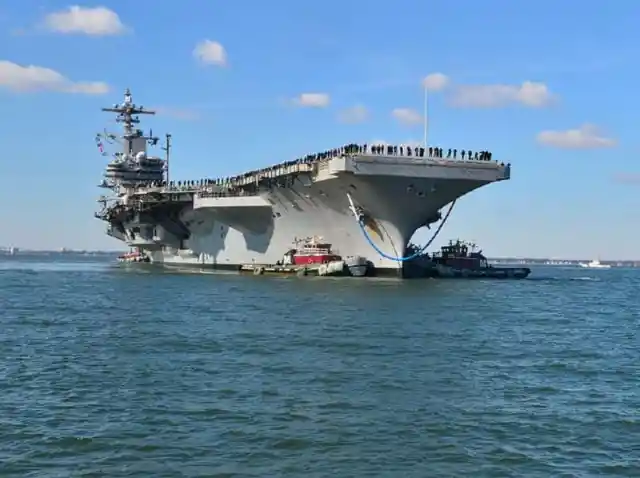
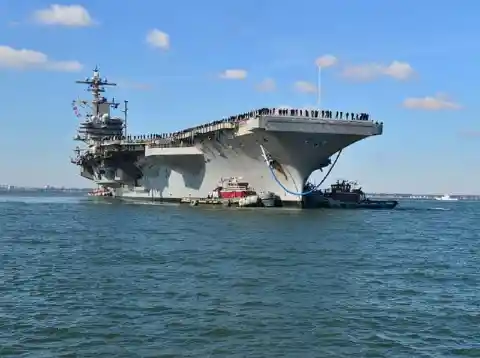
Also, the flight deck for an overhaul that reduced its radar signature. Other improvements include faster and more efficient ways to refuel aircrafts and deflecting jet blasts. The ship also has a few weapons on board, such as RIM-116 Rolling Airframe Missiles, just in case.
Aircraft carrier (USS Midway CV-41)
The USS Midway is the largest ship on the planet. It is now decommissioned and is used as a museum. This former aircraft carrier now calls San Diego home should you ever want to go aboard and visit. The USS Midway was launched in 1945, just 8 days after the end of World War II. This ship has been a part of every major military conflict the United States has seen since its build.
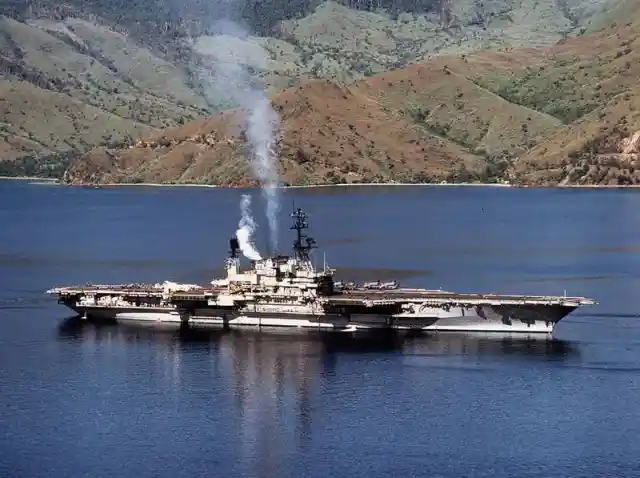
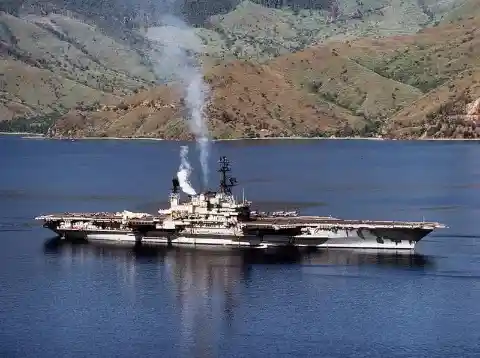
One of the most dramatic stories about this ship happened during the Vietnam War, when a South Vietnamese pilot wanted to escape with his family and so he flew overhead and dropped a letter begging the ship to let him on with his family. The ship complied and saved the pilot and his family.
USS Los Angeles SSN-688
This submarine is the longest serving sub in the United States Navy. The USS Los Angeles was decommissioned in 2011, but not before serving the country proudly. The attack sub can handle all forms of attack - land, air and under water. The sub was in commission for 34 years, during which time she got nine Meritorious Unit Citations and a Navy Unit Commendation.
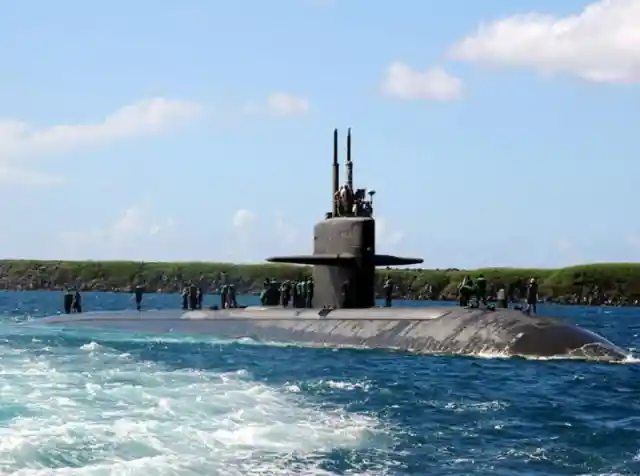
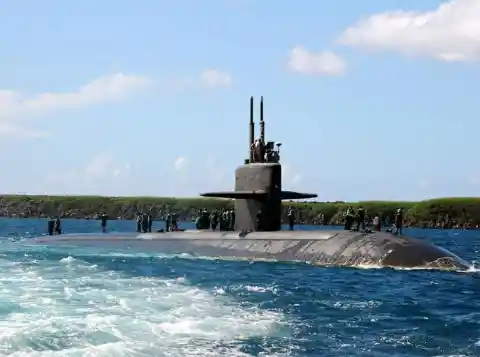
This sub holds a whopping 48 torpedoes, Tomahawk cruise missiles, and Harpoon missiles. When she was decommissioned in 2012, the Navy took her apart in order to recycle her parts for other ships; their own recycling program if you will.
Virginia-class attack submarine (SSN-774)
The Los Angeles' replacement is the Virginia you see here. This nuclear powered submarine is made for coastal attacks in particular. She is designed in a very specific way, with a Photonics Mast Program which was able to make room for a larger control room.
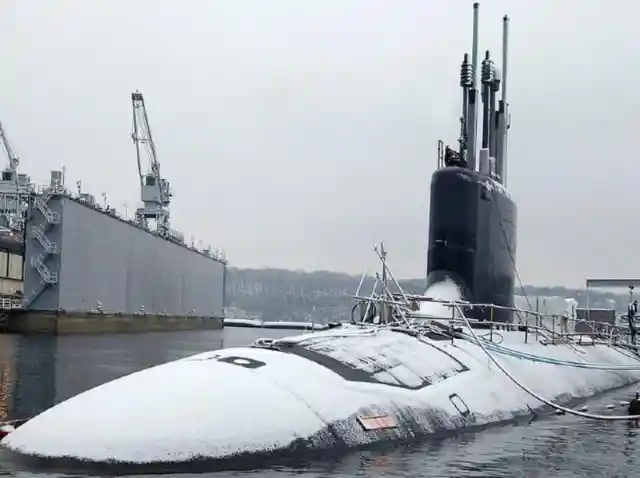
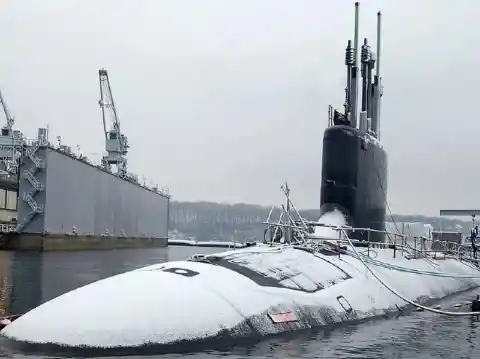
The ship is digital and has ballast controls and pressure chambers that deploy SEALs while the ship is submerged. All of this makes the ship unique from other submarines. There are 13 more just like this ship, with 24 more in construction as we speak. She is weaponized to perfection with MK-48 torpedoes, and BGM-109 Tomahawk cruise missiles.
USS Ticonderoga (DDG/CG-47)
This is the lead vessel in the Ticonderoga class and the CG-47 is also incredibly decorated for its functions within operations. This ship has since been decommissioned as well, but in its time it has gotten a Secretary of the Navy Letter of Commendation, as well as a Chief of Naval Operations Letter of Commendation, among other honors.
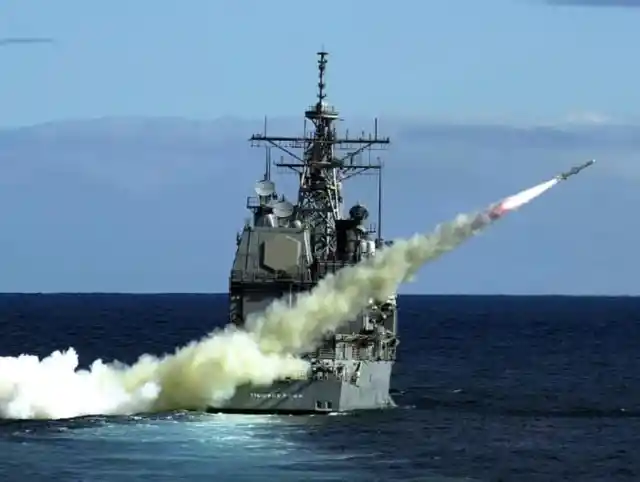
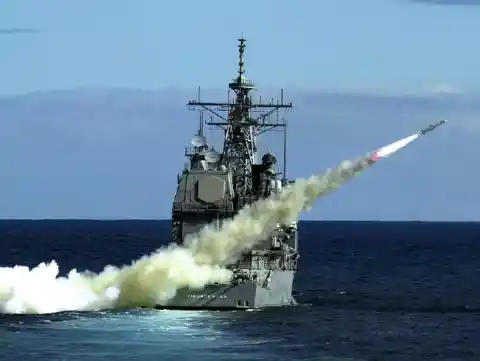
The ship got its name from the Battle of Ticonderoga during the Revolutionary War. Initially, this ship was designed to be a destroyer, but was later converted to fit as a cruiser. She was decommissioned in 2004 and is set to be recycled.
USS Freedom (LCS-1)
The USS Freedom may be smaller than others, but it is built for speed and flexibility. It is also built for anti-submarine and anti-mine warfare. This baby does not combat other ships but is great at deterring others. Unfortunately, this ship has seen a lot of issues at sea, such as several engine failures and no less than 17 cracks.
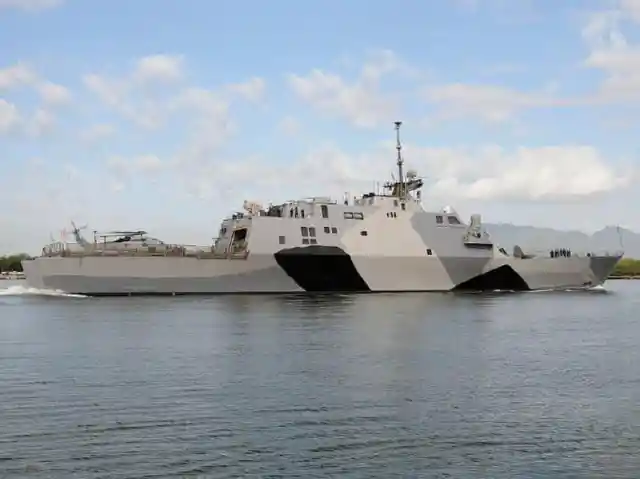
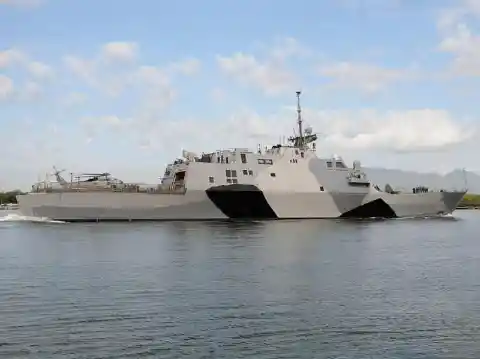
Despite the issues it has seen, this ship has proven herself valuable during humanitarian missions, as well as a rough sea test that it endured in 2015 to show that it is still strong enough to endure whatever comes its way.
USS Chief (MCM-14)
This giant ship is part of the Avenger class ships that specialize in mine countermeasures. It is armed with two .50 caliber machine guns, and a state of the art mine neutralization system. The ship was made to be able to withstand mine explosions, as it was built with wood coated in plastic sheathing.
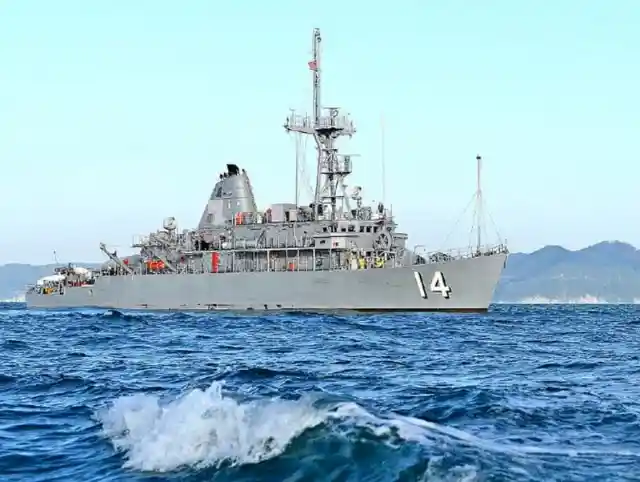
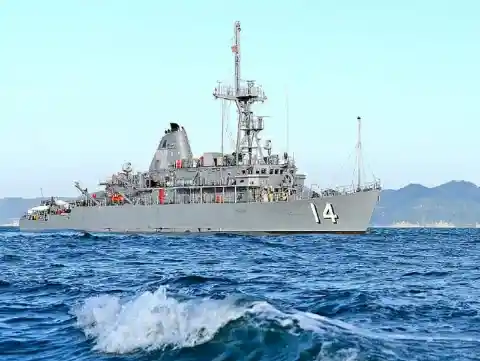
The ship needs to be light and move fast as it detects the mines with their sonar system. In addition to finding the mines, it also has the capability of detonating it so that the threat is removed immediately. This ship is the biggest minesweeper of its kind in the Navy.
USS Harpers Ferry (LSD-49)
The Harpers Ferry, named after the same place in West Virginia, is the lead ship in this type of ship which is a docking one. LSD-49 has been a part of a number of humanitarian missions, including the tsunami and earthquake relief in 2011 in Tohoku. The Harpers Ferry can bring amphibious vehicles and other such transports into battle should the need arise.
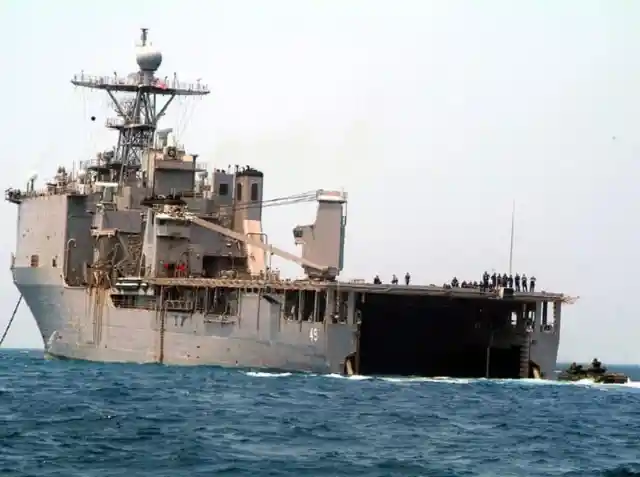
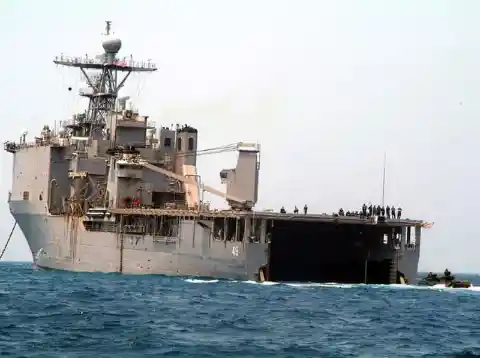
She has 20-millimeter Phalanx close-in weapons systems, 25-millimeter MK 38 rapid-fire cannons, Rolling Airframe Missile launchers, and 12.7 millimeter M2HB machine guns. This is definitely a ship you do not want to mess with.
USS Arleigh Burke (DDG-51)
This ship has been dubbed "Fast and Feared" for a reason. This ship is good at being on stealth mode, moving fast and unseen by others. She is able to remain undetected by anti-ship missiles because of her speed. She was initially commissioned in 1991. One of the biggest operations this ship was a part of was anti-piracy missions around Somalia when they were an issue.
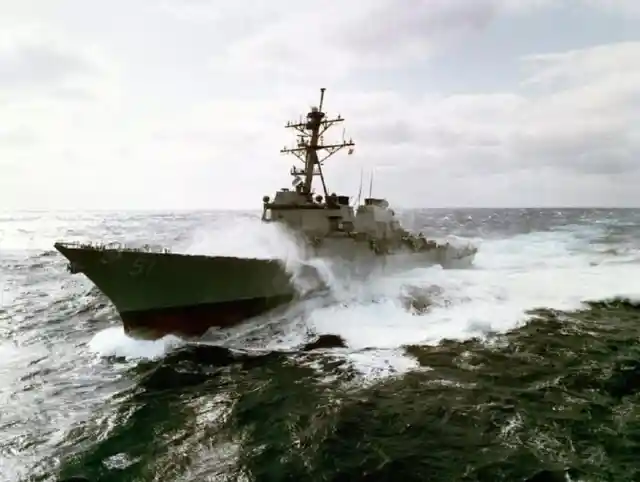
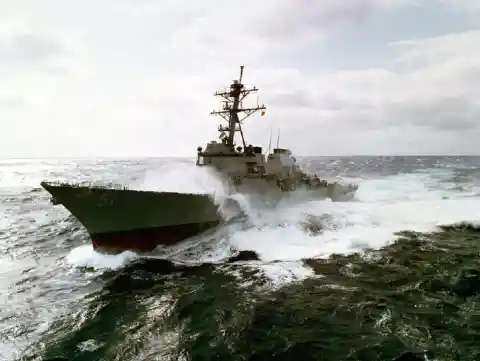
This ship can launch, evade, and track missiles all at the same time. Her shield, of sorts, helps this ship remain unaffected by radioactive, chemical, or biological threats. She call the Naval Station in Norfolk, Virginia home.
USS Turner Joy (DD-951)
The Turner Joy is one of 18 such Forest Sherman class destroyers. This one was initially launched in 1958 and now spends its time in Bremerton, Washington as a floating military museum. The Turner Joy was a part of the Gulf of Tonkin event, where ships were being targeted. This was the event that started America's involvement in the Vietnam War.
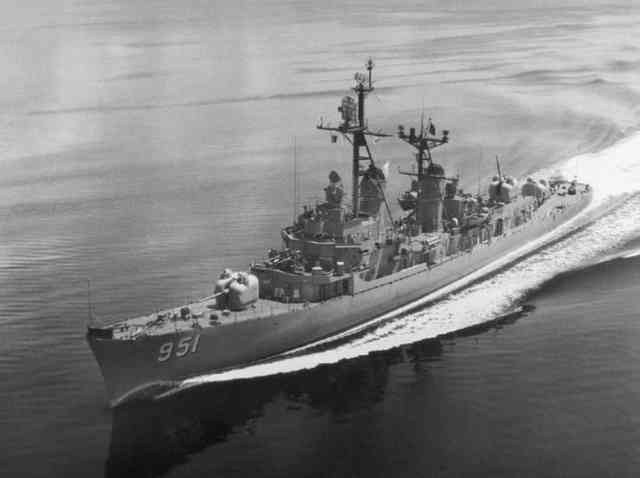
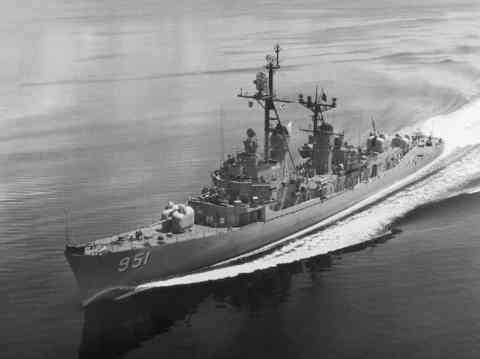
The Turner Joy was weaponized with Mark 10/11 hedgehogs, Mark 32 torpedo tubes, 54 caliber dual-purpose MK 42 guns, and Mark 33 anti-aircraft guns. The ship has made the Navy proud with its hard work throughout its career at sea.
USS Peleliu (LHA-5)
This ship got its name from the Battle of Peleliu, a battle which took place during World War II against Japan. This ship is currently located in Pearl Harbor, Hawaii where she is in reserve. During its active years, this ship helped bring humanitarian aid after the earthquake in San Francisco in 1989, as well as Operation Enduring Freedom, and Operation Iraqi Freedom.
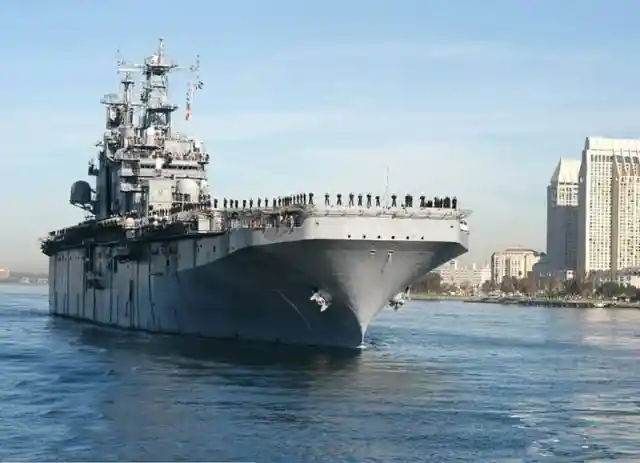
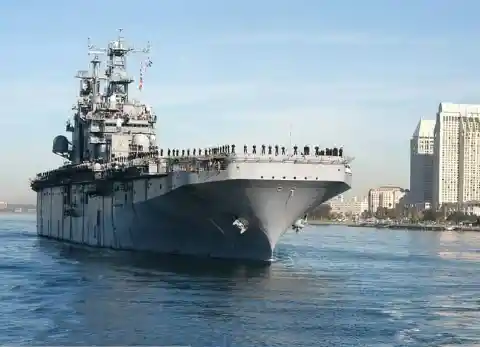
The ship was weaponized with Rolling Aircraft Missile launchers, 12.7 millimeter machine guns, 25 millimeter MK 38 Bushmaster gun mounts, and Phalanx close-in weapons systems. This mighty ship was not your average ocean floater.
USS Samuel B. Roberts (DE-413)
The sadder one of the warships we have on here. The USS Samuel B. Roberts was actually hit and sunk towards the end of World War II by Japanese forces. The ship was able to make a lot of damage before it was out for the count, though.
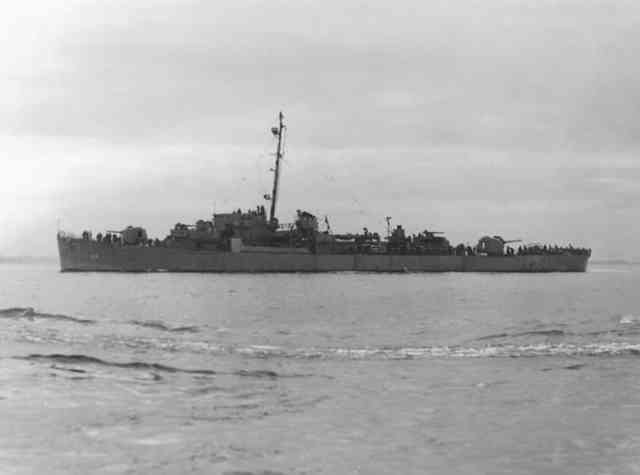
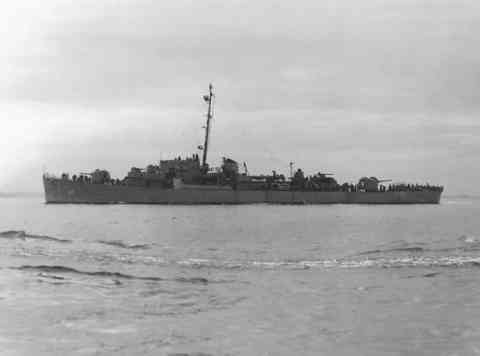
She was able to hit a Japanese ship with a torpedo, as well as lay on heavy machine gun fire. The warship was one of the reasons the United States was able to win the Battle of Samar. When the ship did sink, 120 of the survivors clung to life rafts for over 50 hours before being rescued.
USS Santa Fe (SSN-763)
This is another Los Angeles class sub. This one is nuclear powered and a what is known as a fast attack submarine. The sub was launched in 1992 and commissioned in 1994. Over the course of her career at sea, this sub has traveled the world, staying mostly in the Far East, in places such as Guam, Thailand, India, and Singapore.
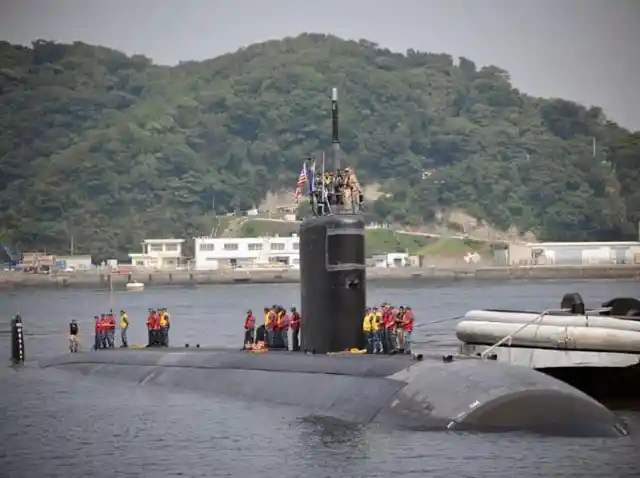
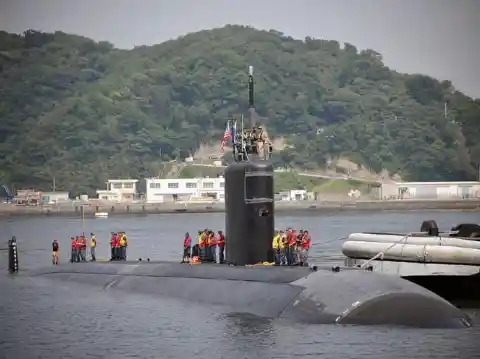
During a rather eventful deployment over the course of six-months, the sub was a crucial part of four operations that were vital to national security (which we cannot tell you, obviously). The sub has been decorated with the COMSUBRON 7 Battle 'E' Award.
USS Zumwalt (DDG 1000)
This futuristic-looking ship is a leader in the Zumwalt class of ships. This destroyer is a guided-missile one, and quite nearly did not make it after it had spring a leak and hit a wall in the Panama Canal. Luckily, the crew on board were quick and smart enough to pull her across using tugboats.
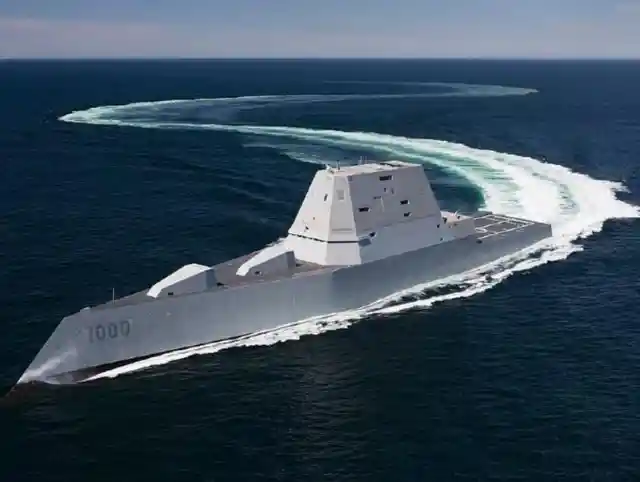
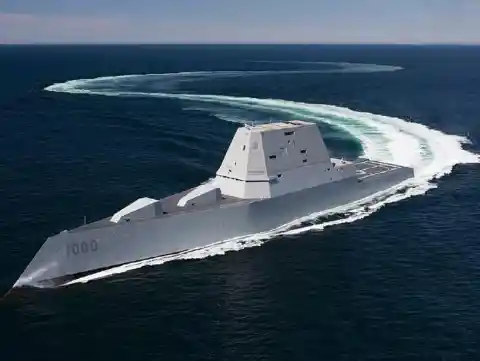
What makes her a unique destroyer is the fact that she is equipped with multi-mission capabilities, rather than the regular deepwater specs that other ships have. One of the specific things she is able to do is mount ground attacks, managing to hit targets from 80 miles away.
USS Hurricane (PC-3)
This is a coastal patrol ship. It has the very important job of surveillance and intelligence collection as part of the counterterrorism efforts. In addition to monitoring, the ship is also designed to patrol and protect the coastline it is located in.
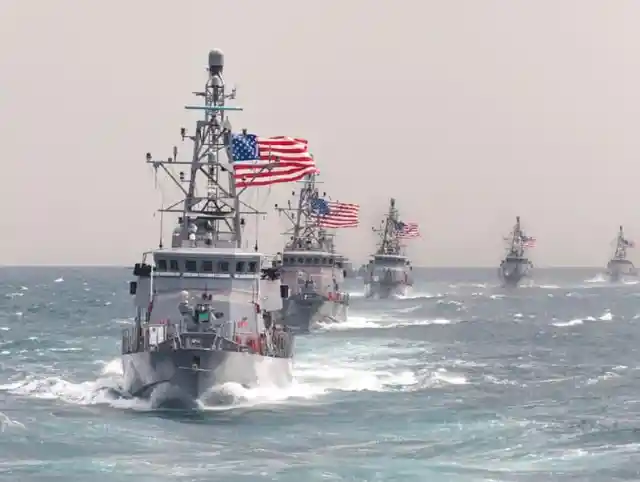
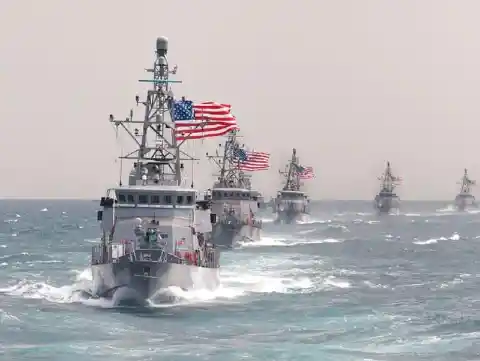
The USS Hurricane was first launched in 1992 and was used to patrol the coast of Haiti in order to restore political stability. This ship can handle itself in deep sea as well as shallow waters, which other ships are too big to do. They were invaluable to the country following the attacks on September 11, 2001.
USS Lewis B. Puller (ESB-3)
This ship is actually an Expeditionary Mobile Base - the only one of its kind. The USS Lewis B. Puller provides support to aircrafts that are set to deploy to hot combat zones. The ship carries CH-53 heavy lift transport helicopters, as well as .50 caliber machine guns. It may not be big, but it is mighty useful for the Navy.
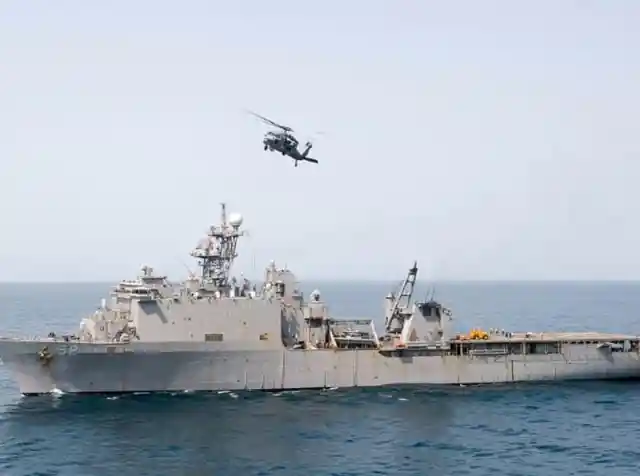
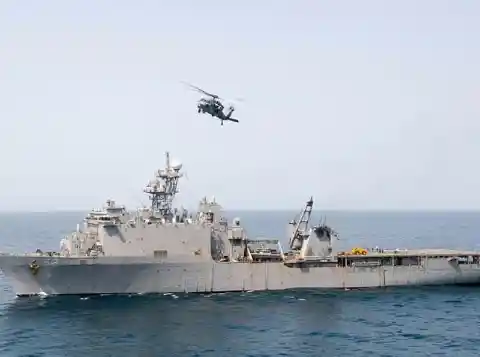
The ship was initially launched in 2014 and commissioned in 2017 at Al Hidd, Bahrain. This is the first Navy ship that was commissioned outside of the country. This ship therefore has no home base and is brought supplies and takes on any repair while out at sea.
USS Ponce (LPD-15)
This ship was named after a city in Puerto Rico called Ponce. The ship was initially launched in 1970. The ship saw itself hit badly in 1984 as it was trying to move an assault ship to Radio Island.
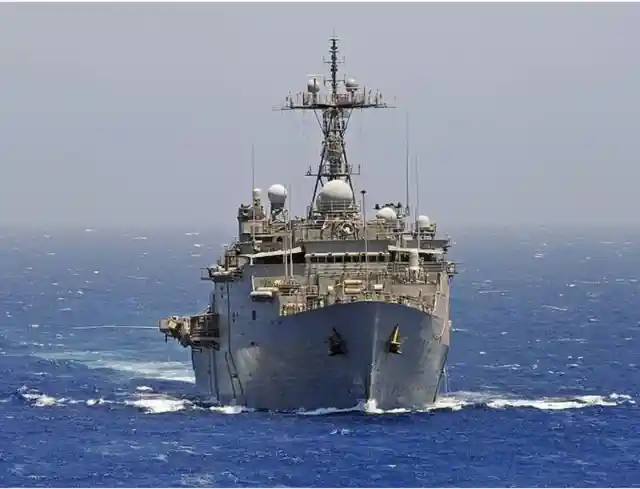
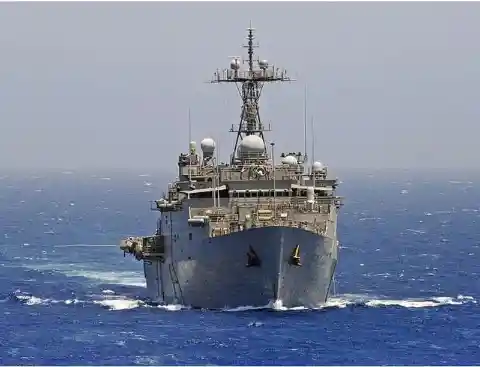
The ship may have gotten damaged but it did not prevent it from forging forward and being an intricate part of the peacekeeping missions that took place after the Beirut barrack attacks. Ponce later aided in both Operation Desert Storm as well as the war in Iraq in 2003. The ship was decommissioned in 2017, but saw many years of service.